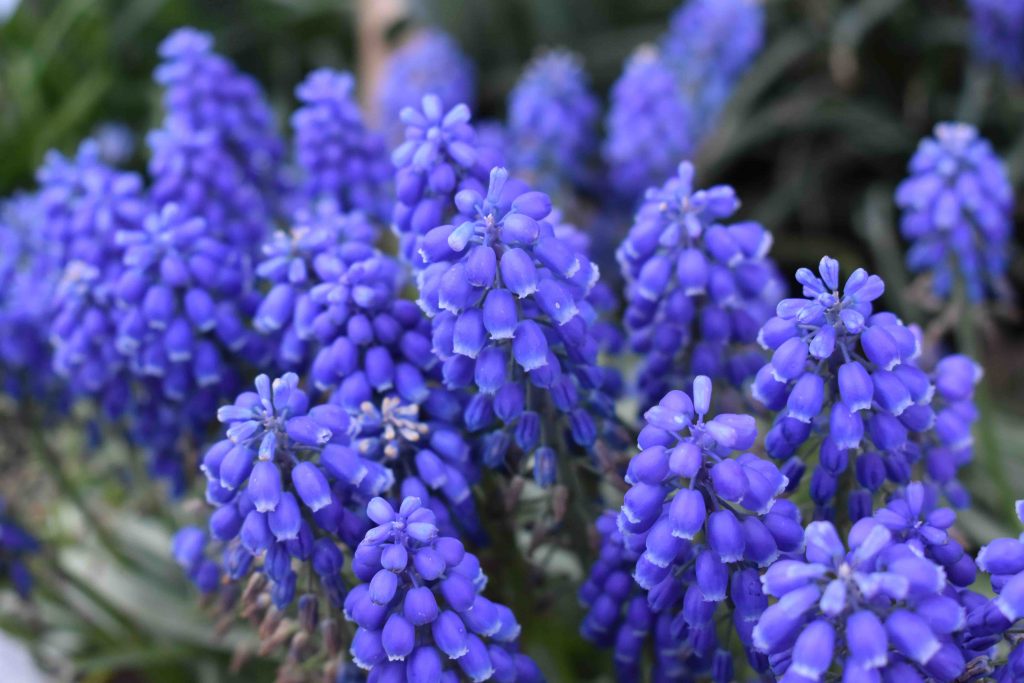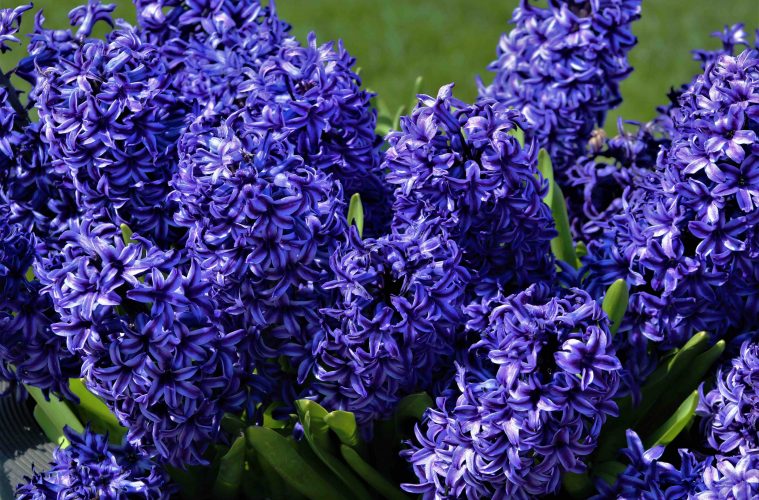What we refer to as bulbs are the underground food storage units that comes in a variety of shapes and sizes. They are also sometimes called tubers, rhizomes or corms.
True bulbs are the ones with a layered structure, with a central core from which the new plant shoots from. It has a basal plate at the bottom from which the roots shoot out searching for water and extra nutrients.
Growing Hyacinths Indoors
You can clearly see this from the form of a hyacinth bulb. When you plant it on a layer of stones hydroponically, it’s quite fascinating to watch the new stem shoot from the top and the roots from the base. For this reason, choose a glass bowl and pebbles of your choice, but make sure that the water never touches the base of the bulbs or they may rot.
The roots will soon secure themselves in the pebbles and be strong enough to hold the stems. These reach a height of around 20cm, packed in a column of pretty flowers in colours of blue, white, purple and pink. There are other colours like cream and wine red which you should grab if you see them at your local nursery.
Keep in a cool place and top up with clean water regularly. Make sure to keep out of direct sunlight – they prefer a bit of shade grown outdoors, so do well indoors. The bulbs can be placed quite close together in a tray or container as long as the bulbs are not touching, just leave space for them to flower.
As the stems grow and get to around 10cm tall, the flowers will start to develop. At this stage it’s wise to turn the container daily so that the stems don’t lean towards the light and bend over. Another reason they may fall over is excessive heat. Make sure to keep them cool and if they look like they are getting too much warmth, move them to a cooler spot or set them outdoors for a few days.

Growing Hyacinths Outdoors
In the garden, they prefer good drainage with added compost for temperature regulating. In containers, plant with the neck of the bulb exposed, but in the ground rather plant a little deeper so the bulbs are not heated by the sun. Make sure to follow the directions on the packet when you buy them as to the depth and space for the best results and plant them with the pointed side upwards. They like cooler temperatures (even down to -15°C) and regular watering, but don’t overwater. Wait until the soil is dry before watering deeply. Add a layer of mulch to keep the soil moist and cool.
Once the flowering season is over, they can be discarded. It is best to purchase fresh bulbs each year as the commercial ones perform better than the ones we can feed up and store ourselves.
Some people are very sensitive to the oxalic acid that is found in bulbs like hyacinths and daffodils, so if you are not sure, wear gloves when handling them for planting as they can irritate bare skin.
Words by Madison Moulton
ALSO SEE: 5 PHILODENDRON VARIETIES TO GROW INDOORS
gardenandhome.co.za/decor/5-philodendron-varieties-to-grow-indoors/

